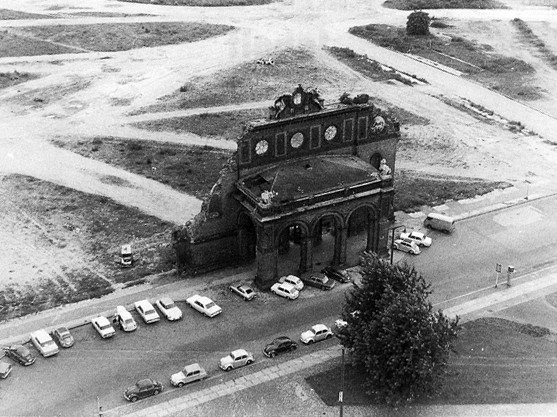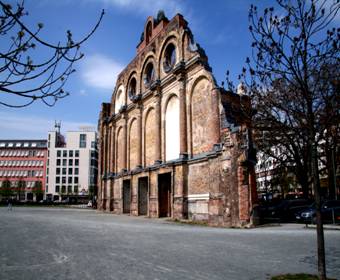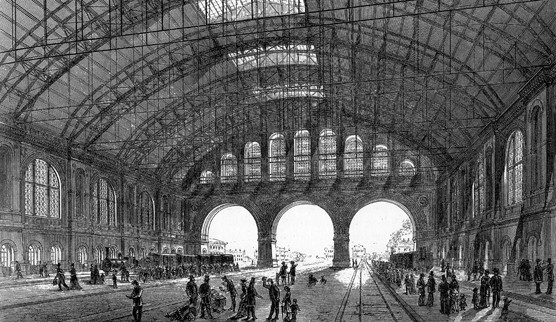
At the end of the 19th century, Askanischer Platz was alive with big-city energy. The monumental structure of the train station (nicknamed ‘The Gateway to the South’) served for a long time as one of the most important transport hubs in the city. It was also a symbol, first of the German empire and then as a core part of Nazi propaganda. From this transport nexus, long-distance trains set off for Vienna, Rome and Athens – and later 9600 Jewish Germans were deported to the concentration camp in Terezìn and the execution chambers in Eastern Europe, packed onto trains by Hitler’s death squad.
Today, all that is left is the ruins of the brick arches, and a park where you can explore the bombed remnants of the old platforms, left in an open wilderness since the station was partially destroyed in WW2. Where once stood the ‘lion’s den of the railroad’ (according to Walter Benjamin) now stands the Tempodrom. This tent-like structure is home to a music concert venue and the Liquidrom, which offers an urban spa experience including a space-age salt water pool. Parts of the historic freight yard has been transformed into the Science Center and Technology Museum, which catches the eye with its ‘candy bomber’ plane, suspended high above the rooftops.
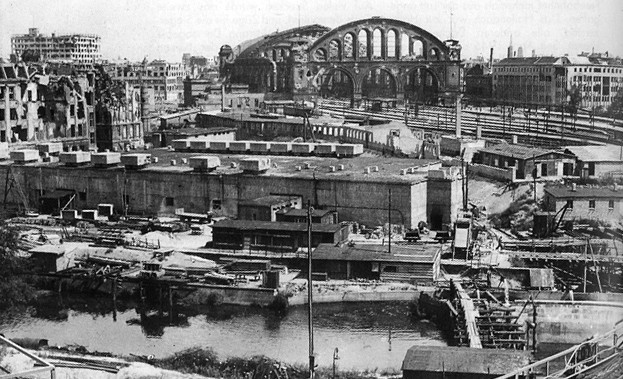
Opposite Anhalter Bahnhof was the Excelsior, which stood there from 1913 to 1954. With 600 rooms, an underground spa, a library and tunnel underpass connections to the train platforms, this hotel was truly one of the most magnificent hotels in the continent. Nowadays, the only remaining sign of this place is the name, now given to a 17-story tower block built on the site of the hotel, which was destroyed in the Second World War. From 1933 to 1945, the control centre of Nazi repression and crime policy stood between Prinz-Albrecht-Strasse (nowadays called Niederkirchnerstrasse), Wilhelmstrasse and Anhalter Strasse. This historical site, which was also home to the Gestapo headquarters, the SS Security Centre and the Centre for State Security (from 1939), was therefore the command centre of the Nazi regime’s reign of terror. ‘The Topography of Terror’, a permanent exhibit established in 1987, documents the sheer murderous extent of Nazi rule. All that is left of the network of bunkers and tunnels which sprawled around and under the Anhalter Bahnhof station is the enormous East German Railroad bunker with its 2m-thick walls. This bunker is open to the public nowadays as something of a ‘chamber of horrors’.
This area features traces of German/Berlin history going well beyond the 20th-century events we’ve all heard of. Directly in front of the Clemens Courtyards, the complex housing our hostel, there is also a piece of Berlin’s old customs-and-excise wall. This structure replaced the medieval city wall in the 18th century, and was the place where city trading was regulated.
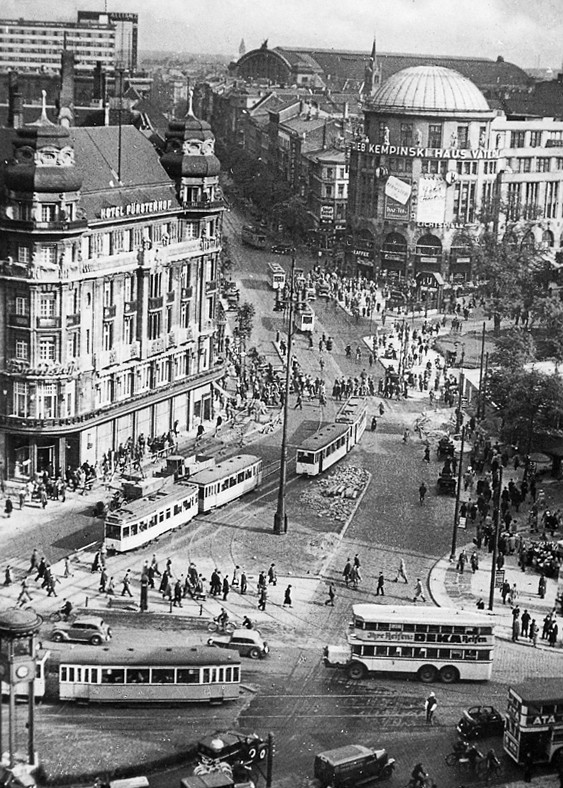
At the 18 customs gates along the wall, traders were stopped and made to pay excises (taxes paid directly on imported goods); this prevented smuggling and had the added function of stopping defecting soldiers on the run from the local garrison. The most notorious wall in Berlin, which separated East from West for 28 years, ran across the city, passing by the hostel just 200m away from the building. This wall, called a ‘fortified state border’ in GDR times, was primarily erected to prevent residents of East Germany escaping to the west. Remnants of this ‘antifascist barricade’ (as it was called in GDR propaganda), can be found just across from the Berlin House of Representatives (the former Prussian Landtag). Not far from this spot, David Bowie took to the mike in the Meistersaal (‘the big hall by the wall’) of Hansa Studios, to sing his huge hit ‘Heroes’.
The area surrounding the Three Little Pigs Hostel is a real cultural oasis. On Stresemannstrasse, the curtain raises on the century-old stage of the HebbelTheater, nowadays one of the most renowned centres of contemporary theatre in Berlin. The unique zigzag architecture of the Jewish Museum, created by Daniel Libeskind in the deconstructivist style, houses artifacts from two millennia of German-Jewish history, including special temporary exhibits of art and pop culture which change on a regular basis.
Known as the ‘National Museum of Modern Art, Photography and Architecture’, the Berlinische Galerie is situated in a residential area which itself is scattered with sculptures and installations, preparing you for a truly aesthetic experience. This museum is a place where meaningful historical artifacts are juxtaposed with contemporary creative works, creating memorable exhibits such as: Dada and Flux; New Objectivity and Expressionism; Russians in Berlin; The Avant-Garde in Architectur and Photography; Berlin in the Shadow of the Swastika; The City in Ruins; East and West Berlin; and The Metropolis after the Reunification.
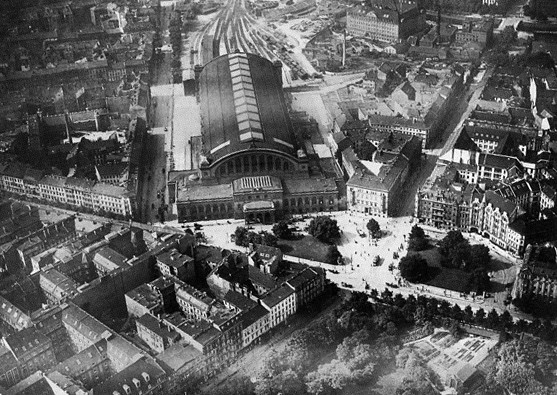
The Kreuzberg district enjoys international notoriety, not just for its alternative scene which developed in the shadow of the wall and grew as different social groups peacefully co-mingled and shared ideas; Kreuzberg is also famous for the legendary conflicts which took place in its streets over 30 years ago, not to mention the yearly scuffle between autonomists, police and those simply looking for a fight – a moment of anarchy which has taken place on the 1st of May ever since 1987. Opposite the Willy-Brandt-House (the Party Headquarters of Germany’s Social Democratic Party) lies one last relic of the left-wing autonomists’ opposition movement: the Tommy Weisbecker Haus is a self-governing commune, founded in March 1973 as a protest against Berlin’s accommodation and renovation policy. As one of the last remaining true alternative projects in the area, it serves as a reminder of the many anti-establishment squats scattered around 1980’s Kreuzberg, which at one time numbered almost 100.
